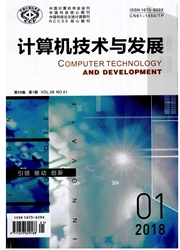

 中文摘要:
中文摘要:
指数平滑法是车联网中交通流预测较为常见的方法之一,其准确性主要取决于平滑系数。由于传统指数平滑法系数是静态的原因,其已经不能满足交通流预测的精度要求。为了进一步提高预测精度,对传统指数平滑法进行了分析,其平滑系数相对静态,不能实时进行修正,导致其不能很好地反映数据变化的实时趋势。通过利用三次指数平滑法对交通流预测模型进行优化,利用等距法寻找每次预测时的最优平滑系数对数据趋势进行估计,保证了每次预测时的平滑系数最优,提高了预测精度。基于交通流预测的不同应用环境,利用南京某路段实际的交通流数据进行仿真,得到的仿真结果表明,提出的优化算法在预测交通流数据变化趋势方面有较高的精度。
 英文摘要:
英文摘要:
The method of exponential smoothing is one of more common methods for forecasting the traffic flow in IoV ( Interact of Vehicle), the accuracy of which depends on the smoothing coefficient. This method has been unable to meet the need of accuracy while forecasting traffic flow because of the static smoothing coefficient. By analyzing the features of the traditional exponential smoothing method, it is pointed out that the changing trend of data can' t be reflected appropriately using this method due to the static smoothing coefficient. Then the cubic exponential smoothing method is proposed aiming at further improving the forecasting accuracy. The changing trend of data can be forecasted through searching for the optimal smoothing coefficient using the equal interval method after optimizing the model of forecasting traffic flow by the cubic exponential smoothing method. Finally,the actual data of traffic flow on one segment in Nanjing is simulated based on different application environments where the Iraffic flow is forecasted. The simulation results show that the accuracy of the proposed optimization algorithm is better in terms of forecasting the changing trend of data in traffic flow.
 同期刊论文项目
同期刊论文项目
 同项目期刊论文
同项目期刊论文
 期刊信息
期刊信息
